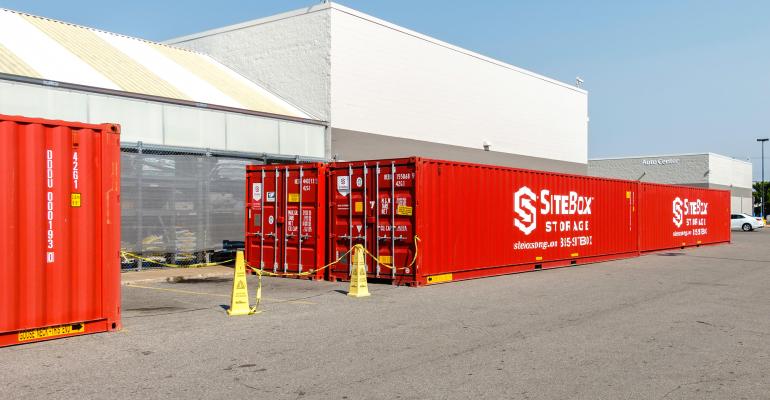During the pandemic, many retailers shifted their inventory strategy from "just-in-time" to "just-in-case," stockpiling popular goods to ensure timely fulfillment of orders amid a breakdown in the supply chain. In recent months, however, a decline in consume spending left retailers with excess inventories that have added to the strain on their storage capacity, especially at a time when industrial space is already at a premium.
A recent Wall Street Journal article reported that U.S. retailers lack room for new inventory and have started using containers and trailers for overflow storage because of their mobility. This, in turn, is creating a shortage of containers and trailers needed by the logistics sector to move goods from producers to markets.
“Currently, retailers are navigating the bullwhip effect, a supply-chain phenomenon where small fluctuations result in ever-increasing disruptions along the supply chain,” says Thomas Galvin, research manager in the Los Angeles office of real estate services firm Transwestern. That is why big national retailers, such as Target and Walmart, continue to grapple with an inventory glut of off-season merchandise such as pools, bicycles and tents—items that were in short supply at the start of the pandemic and had been on backorder for many months, Galvin notes.
At the same time, shoppers are now putting the brakes on purchases of durable goods, such as cars and items needed for home improvement projects, and focusing more on everyday goods, such as food and clothing. That’s causing further challenges to retailers seeking to forecast demand, Galvin adds.
But the “just-in-case” model of inventory management “is not going away,” says James Breeze, global head of industrial and logistics research with commercial real estate services firm CBRE. “Occupiers do not want a repeat of 2020/2021 inventory shortages,” he says, adding that merchandise shortages significantly impact retail sales in a highly competitive market. “Whoever has an item in stock will get the customer; I don’t see many companies shifting back to ‘just-in-time’ and risking sales.”
Meanwhile, issues further up the supply chain, including water and power problems in China that have shut down factories, port strikes in the U.K. and energy issues in Europe caused by the war in Ukraine mean higher prices on exported goods, if those goods even get produced, notes Galvin.
“If retailers cut prices to liquidate goods, they will take an immediate loss and restocking those depleted inventories will be even more challenging in the future,” he says. The alternative might mean getting stuck warehousing goods that have gone out of fashion and continue to depreciate in value.
“How retailers balance shifting consumer priorities with longer-term supply disruptions will determine which survive and which do not, as well as what supply-chain model proves the most flexible in an increasingly uncertain world,” Galvin notes.
Impact on industrial demand
Current excess inventory needs to work its way through the system, but this will take some time, according to Matthew Dolly, leader of national industrial research at Transwestern. Total import volume for the top 10 U.S. ports rose by 5.5 percent at mid-year 2022 compared with the same period last year and is up 23.6 percent compared to 2019, Dolly notes. Seven of the top ports reported higher cargo volumes in the first half of this year than in 2021.
As a result, retailers’ need for inventory storage and control has been among the top drivers for industrial real estate demand, according to Breeze. It’s one of the major reasons why vacancy rates are currently at a record low of 2.9 percent.
Industrial developers are attempting to provide the extra space needed, with warehouse construction at a record high with 626 million sq. ft. in the pipeline. But supply-chain issues are also delaying delivery of construction materials and, therefore, project completions, causing retailers to use alternative means of product storage. They are storing inventory in containers at outside storage site, Breeze says, noting that outsourcing of warehousing and distribution to third-party logistics providers is also increasing at a rapid pace.
And while some retailers, including Amazon, have paused their real estate decisions recently, there have been plenty of others who have made commitments to large warehouses in 2022, notes Dolly. Even if the issue of excess retail inventory is eventually alleviated, there is still plenty of demand in the pipeline to fill those warehouses, he says. In fact, Dolly notes that some retailers and logistics firms may consider vacant space as an opportunity to make asset upgrades that are impossible under current constrained market conditions.





